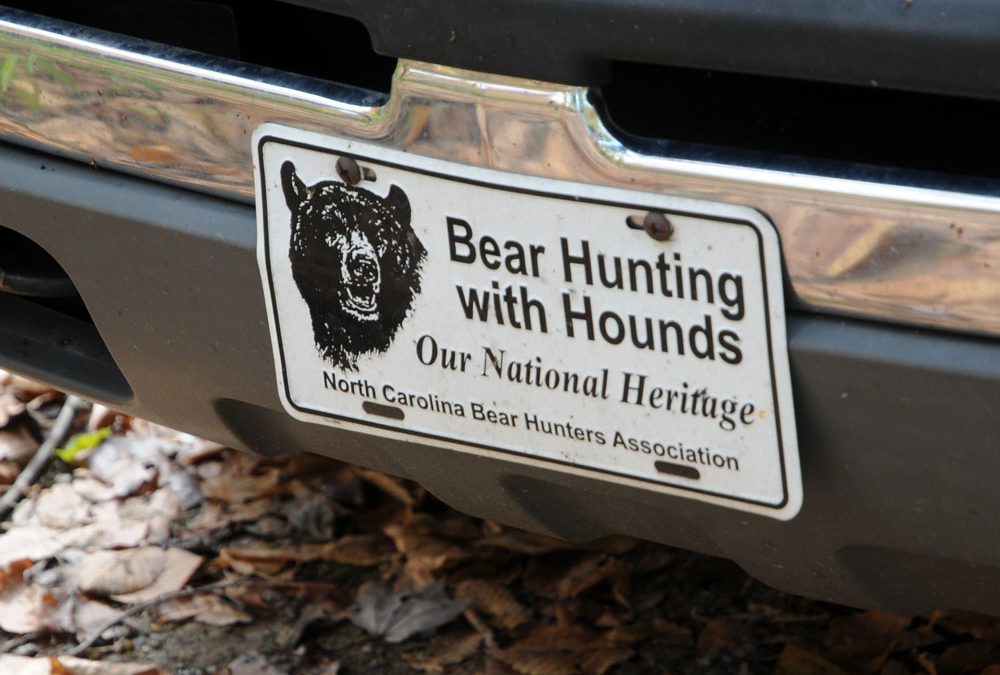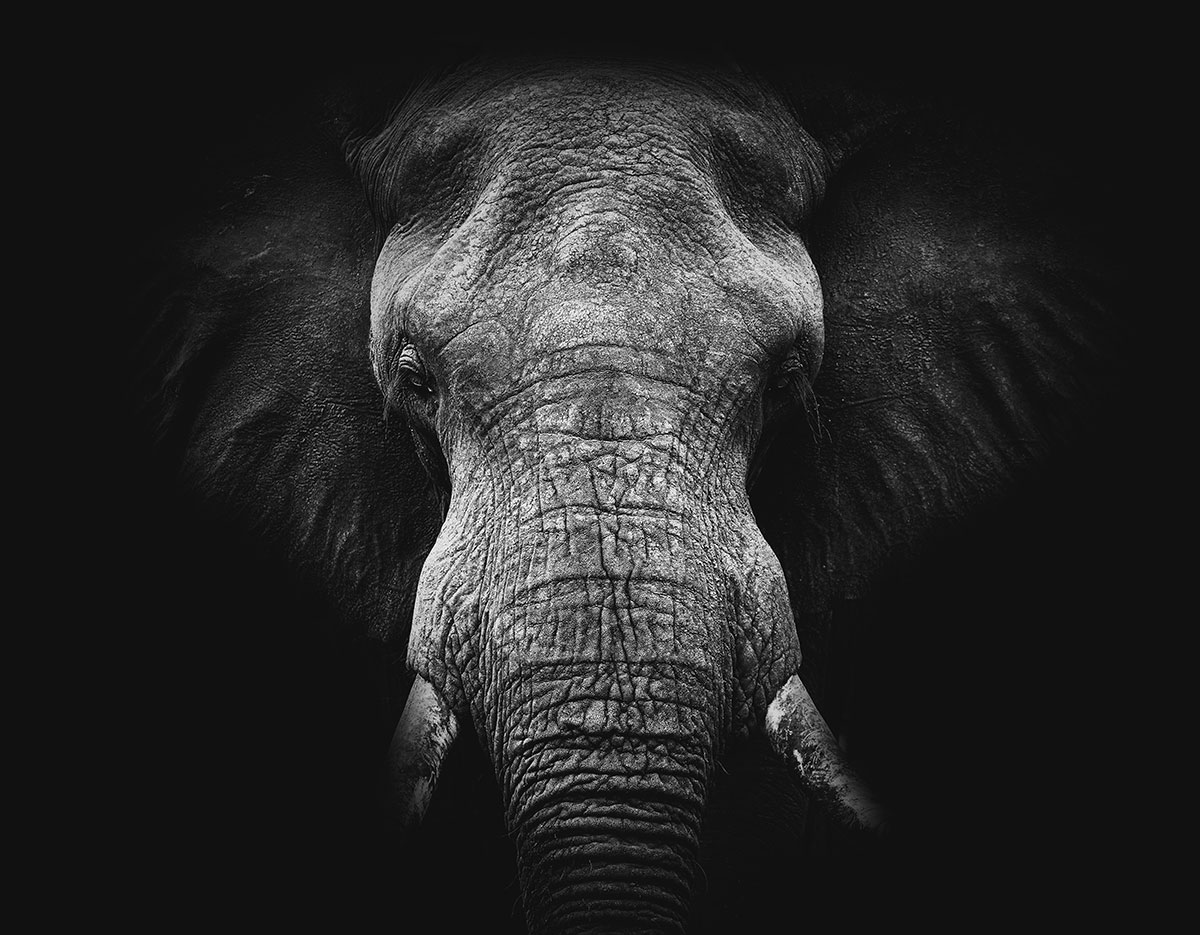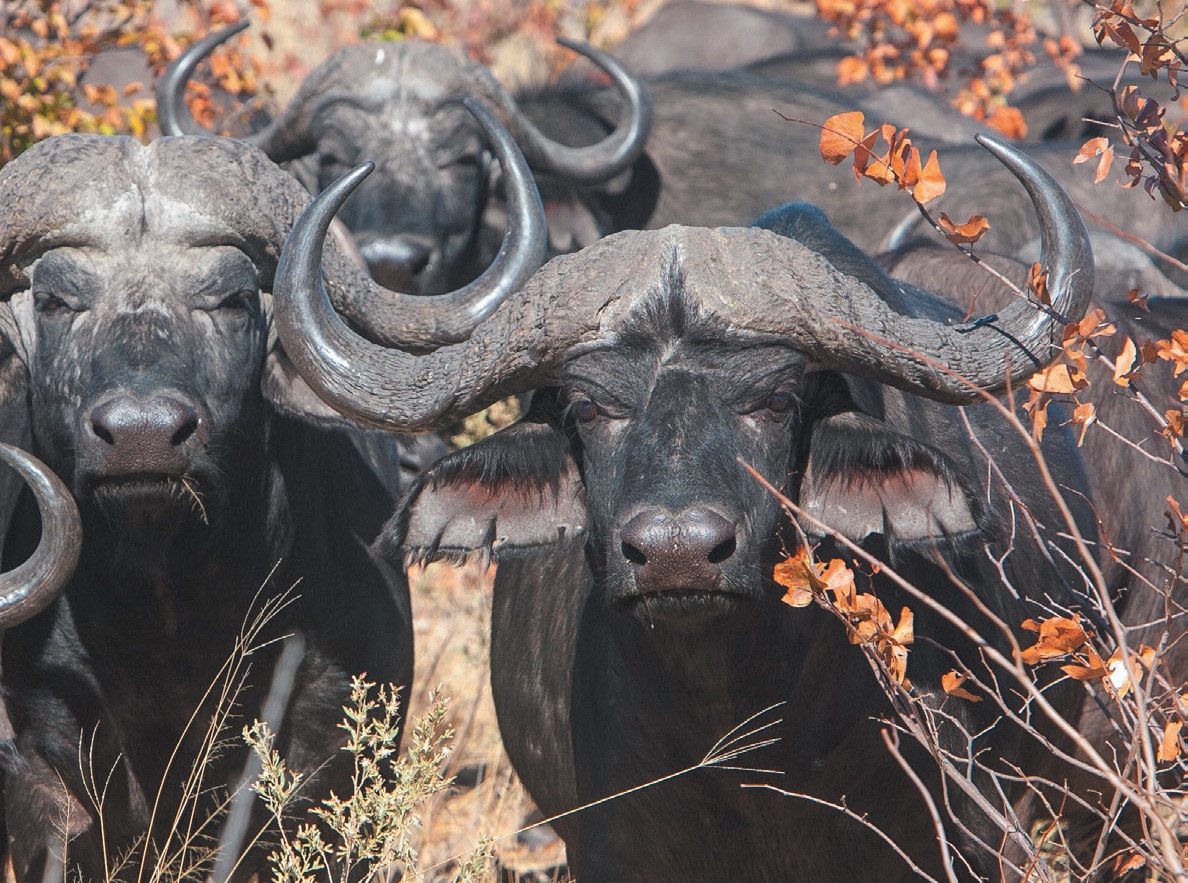No, sir. Your shiny new pickup and those of your buddies are parked, say, at Licklog Overlook on the Blue Ridge Parkway four miles southeast of Mt. Mitchell, the highest peak east of the Mississippi. Stainless-steel dog boxes sit in the truck beds, gleaming in the sunlight. You’re standing there on the crest of the mountains where Pisgah National Forest plunges toward Piedmont country, and you could see darn near all the way to Hickory 50 miles due east were the weather a little clearer.
That’s where I found a squad of bear hunters last week. They weren’t staring off into the distance trying to see with their ears what their eyes could not. Instead, they were peering down at their handheld GPS receivers. If Kep had one, he wouldn’t have been listening for old Dred’s hoarse bellow or Coaly’s sweet baying to tell where the dogs were. Data delivered by satellite would have told him their locations within a few yards; each dog would have been wearing a tracking collar festooned with antennae. Not only that, but the bear might be wearing a transmitter, too, courtesy perhaps of North Carolina’s Urban/Suburban Bear Study.
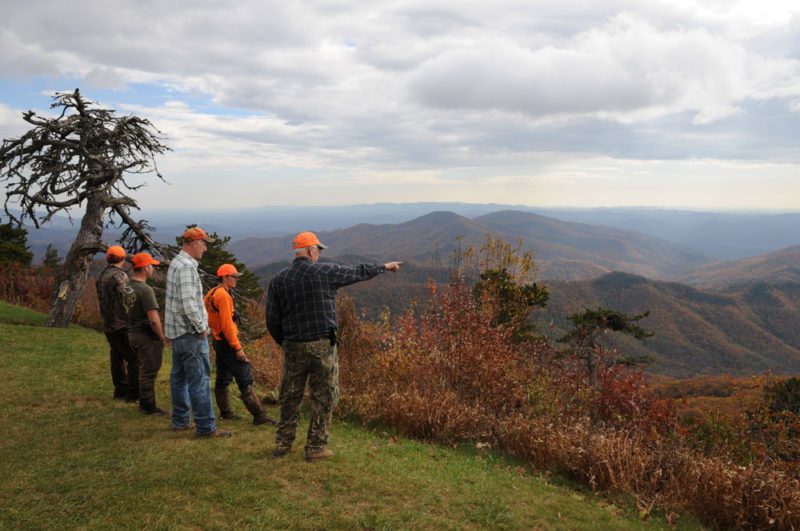
Bears abound in Pisgah and Nantahala National Forests in western North Carolina.
The one I watched being hunted last week was just so attired. It must have been a nuisance bear, a miscreant who had made too many visits to campgrounds in the neighborhood.
“He’s coming down the creek now,” said a white-stubble-chinned gentleman. I asked his name, and he said, “I’m JimBob.”
Before I could finish jotting that down on my notepad, his buddy piped up.
“I’m JimBob.”
“So am I,” said another guy who had a rifle slung over his shoulder. For this story, these fellers will remain anonymous. Hard to blame them in this day of anti-hunting sentiment, where any hunter is a potential target. That’s changed since Kephart’s time, too.
You can see on the screen just where the bear’s headed and the best place to get a shot . . . unless the bear changes its mind.
On the GPS, we watched an emoticon resembling a bear work its way down Licking Branch.
“He’s 518 yards from us,” the first JimBob whispered.
From the cab of one of the pickups, a radioed voice broke the stillness. At an acid glance from JimBob One, JimBob Two hustled to turn it off and was very careful not to fully close the truck’s door lest its noisy latch alert the bear.
No more running through the woods trying to keep up with hounds chasing a bear. These hunters tracked them on GPS.
“He’s smart, and he’ll hear us,” my informant told me.
The bear turned and began to follow a contour rounding the slope below Snooks Nose.
“He’s tired. We’ve been running him all morning, and he don’t want to go up that mountain again.”
JimBob Three, the one with the rifle, stepped off lively down the road in the direction the bear was moving. He had to move aside twice to let cars headed up toward the parkway pass. Leaf season was at its height, and the route is popular with tourists who read maps. Eventually, though, the bear must have smelled too much human presence from campers along the creek. He turned again and headed up Big Camp Rock Branch. Nobody in our group would get a shot at that one this time.
I mentioned being told by hunters I met earlier at Licklog Overlook that somebody had got a bear that morning.
“It’s his,” JimBob One gestured at the clean-shaven and heretofore silent guy leaning against the fender of his pickup. I walked over, notepad in hand, and asked his name.
“Shawn House,” he told me. He said he lives in York, South Carolina, gets up at zero dark 30, drives the 100 miles up to Old Fort, and meets the others at Hardee’s about 7 a.m. just after they get off from working the third shift at one of the local plants. Over breakfast biscuits, they lay out their plans for the morning’s hunt in this deeply forested terrain, where elevations frequently climb 1,000 feet in less than half a mile. This morning he got his first shot at a bear in six years. Despite all the technology, it didn’t come easily.
The dogs treed the bear about 600 yards from the road, but each of those yards was nearly vertical and choked with ankle-grabbing brush. He made it to the tree, fired one round from his .30-06 pump, and hit the bear in the neck as he intended, rolling it off its limb to the ground.
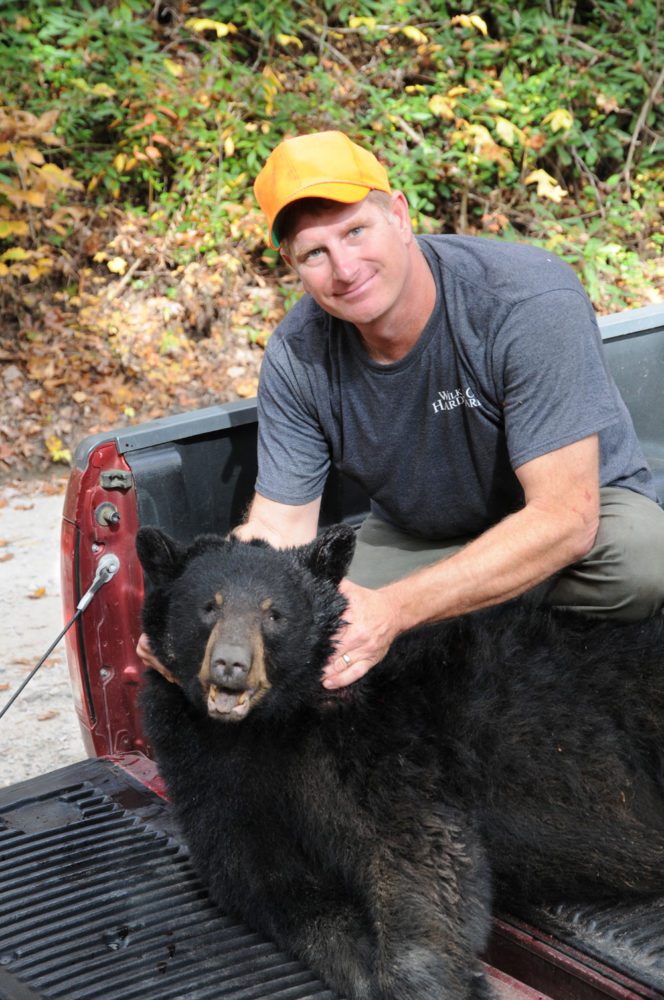
Shawn’s been hunting bears in the Blue Ridge above Old Fort, North Carolina, for six years. That his 200-pound boar fell to a single shot from an old rifle inherited from his mentor made the hunt very special.
“Took six of us to drag it out,” he grinned. “I was so whipped I needed a dog to give me mouth to mouth.”
Shawn showed me the bear, a beautiful boar of about 200 pounds with a thick and lustrous coat. In a few months its full-body mount will grace his den.
Killing this bear was doubly special for Shawn—he’d nailed it with an old Remington 760 Gamemaster that had been handed down to him by a “man who was like a grandfather to me.” He thought about having the rifle refinished, but knowing the mountains he’d hunt with it, he left it like it was.
I asked him why he liked bear hunting. He said a bear is a big game animal that “not everybody gets the opportunity to hunt. It all comes down to tracking, trailing, and treeing the bear.” Moreover, he added, “I love hunting with these guys.”

